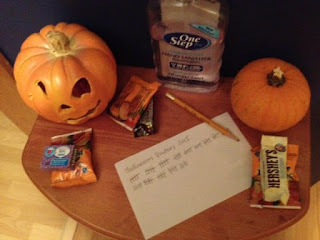Several years ago - I can't believe it was way back in 2011 - Danika organized Brevity is the Soul of Twit - experiencing Hamlet via Twitter. I was Osric and I reflected a LOT on the experience. I may have gone a bit overboard on the behind-the-scenes preparation, even going so far as to create his own Goodreads account and posting my notes about Osric. I may not be Heath Ledger, but I really took the role seriously and had a fantastic and educational time doing it.
Fast forward to 2015. Danika is at it again. This time, it's not a tragedy - it's a comedy. (Much Ado About Nothing). My part is not a minor one like Osric - it's Don Pedro, the Spanish Prince, one of the main characters in the play. Another couple of big differences this time around are that a) I've never read or studied Much Ado About Nothing and b) I didn't have the same amount of time to prepare.
My colleagues have already begun to blog about their experience with doing Shakespeare via Twitter. Niall Cooke has shared how he had some trepidation about the prospect. Danika described how she approached it differently in terms of organization. I *have* to approach it differently myself this time - this is improvisational, without as much advanced preparation. I'm flying by the seat of my princely Spanish pants right now. What have I learned so far?
1) It IS possible to cram a bit and get by.
This isn't a lesson I'd recommend to my students, but it is true. I've read play summaries and character descriptions on various websites but I have a huge copy of The Complete Works of Shakespeare semi-permanently open to the act and scene we are presently portraying and I read and re-read the portions intensely. (Part of this was my fault - I thought I had an extra week to read and ponder my motivations but I didn't.)
2) Comedy is hard.
Humor depends so much on context, situation, cultural and historical references, and many many other factors. I'm told that at school I can be funny, but could I do "funny on demand"? Because the audience isn't directly in front of us, it's hard to tell if a joke or pun or image works or not. We only get feedback via a DM from one of our castmates or if our director RTs a line - but who knows the purpose of the retweet.
3) Positive interdependence is key in drama - and the show must go on.
We can't all be chained to our computers all day to respond to tweets, despite the calendar guideline. Being committed and flexible while working as a team helps. Big thanks to my dear pal Alanna (aka Beatrice) who helped out by stepping in for the Governor with a key line (because in real life he had already gone to bed when the events were unfurling - as we remarked "off stage", it was a LONG scene!) Alanna also saved my behind by helping me turn Don Pedro's press release into an image file so it could be tweeted easier. We have each other's backs (and passwords, if need be).
Here's a Storify of the action so far.
Well, #MuchTaDo is underway! Are you following the players? https://t.co/w3Yr5TNQBB
— ☻ Andrew Forgrave (@aforgrave) December 1, 2015
Thanks Danika for the opportunity. Follow #muchtado to catch all the action!







